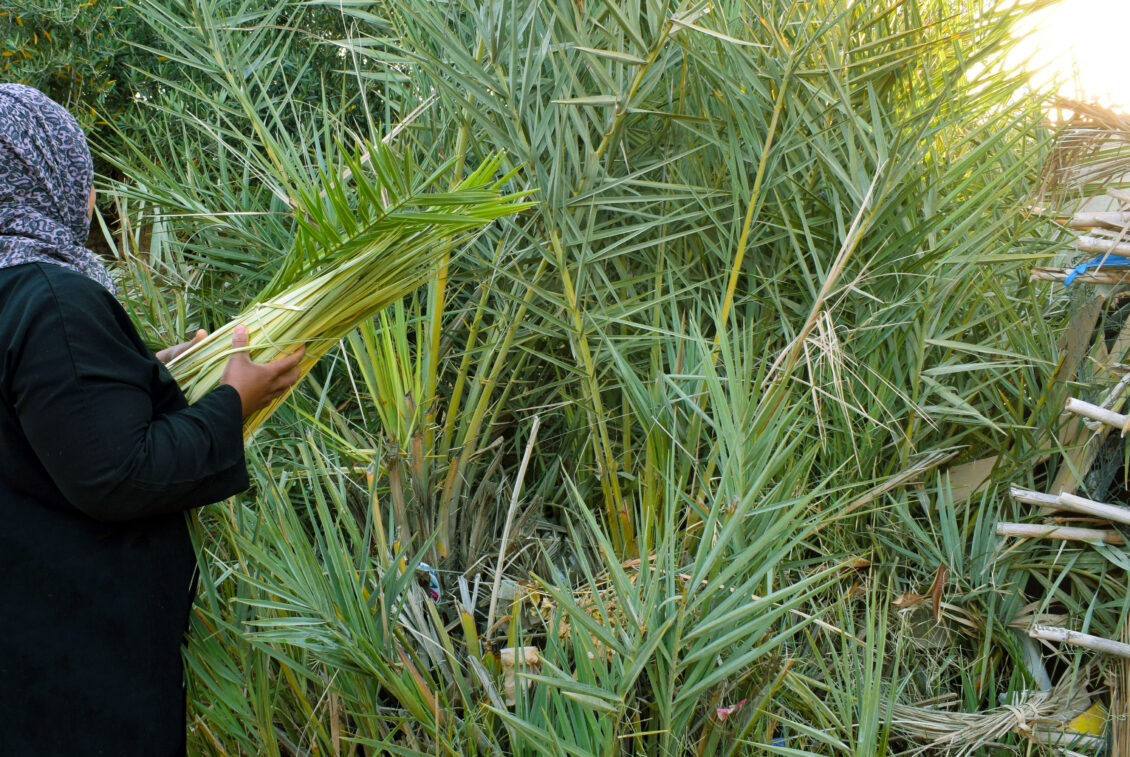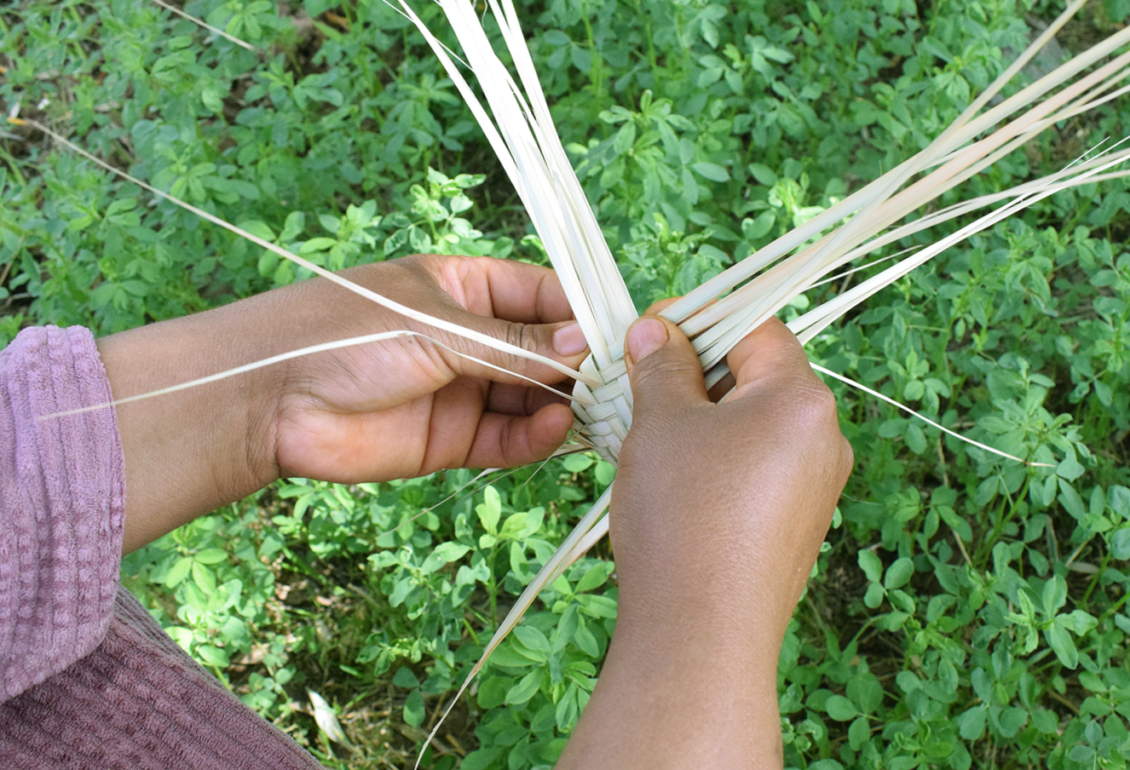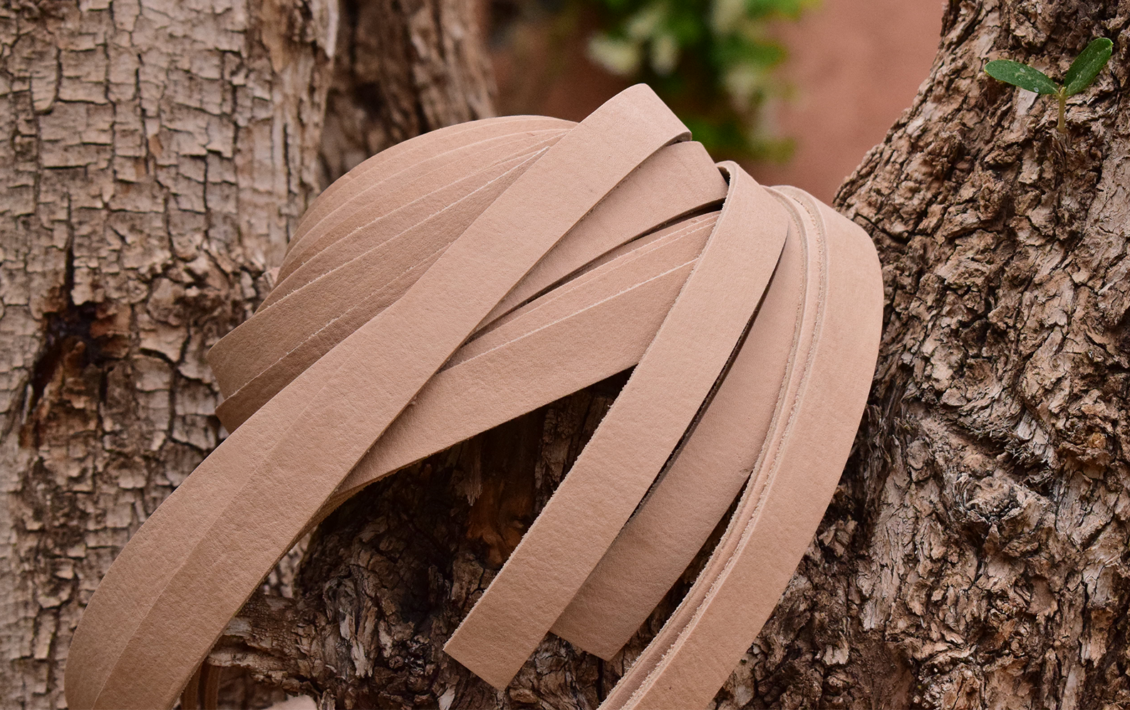Creative Blog
We love writing about anything and your comments gives us motivation and new ideas.
A journey through the traditional art of marshmallow
A journey through the traditional art of marshmallow in Morocco in materials, doum, and palm leaf
Basketry in Morocco is a handicraft of exceptional richness and depth, combining utility and aesthetics.
This art is not only an expression of Moroccan culture and identity, but it also plays a crucial role in the local economy of many communities.
In this blog, we are going to explore some traditional materials used in Moroccan basketryand in our handicraft activity, namely doum and palm leaf.
The Origins: A Gift of Nature
The history of palm leaf baskets in Morocco dates back to ancient times, when the inhabitants discovered the multiple uses of date palm trees. The wide and flexible leaves of these trees have proved to be ideal for drawing baskets, nuts, and even decorative objects.
1. The Doum: The Palm of the Desert
The doum, or doum palm, is a variety of palm trees whose leaves are used to make various handicrafts. This palm tree is resistant to arid climates, making it valuable for the population of the desert region of Morocco.
Doom leaves are harvested, dried, and then soaked to gain flexibility before being torn. They are truncated to create baskets, hats, etc.
The art of doum trimming is often a know-how passed on from generation to generation, with each region having its own patterns and techniques, and each piece tells a story of survival and adaptation to the harsh desert conditions.
2. The Palm Leaf
The palm leaves, especially those of the date palm tree, are another important resource for the Marrakchi basketry. Like the dummy, they are harvested and dried.
Palm leaves are often used to make items such as cushions, suspensions, and decorative items. This material is highly appreciated for its durability and its ability to be truncated into products that are well resistant to everyday wear.
3. The Cultural and Economic Impact
Basketry is a pillar of Moroccan cultural identity and an economic engine for rural areas. The local and international markets for vinery products support our artisans and contribute to the preservation of this traditional craftsmanship. Furthermore, Basketry plays a key role in promoting cultural tourism, attracting visitors from all over the world eager to discover and support local art.
Conclusion
Moroccan vinery, with its inherited techniques and natural materials such as doum and palm leaf, is a living testimony to the richness of Morocco’s culture.
The Story of Khadija
The Story of Khadija: One of the Women in the Village Who Produces the baskets in Marrakech
Weaving Palm Leaf Baskets
In the heart of Morocco, there is a small village called Lemhemdia 1 in Marrakech where time seems to flow more slowly. Here, Khadija, a woman from the region, perpetuates an ancient craft that has been passed from mother to daughter for generations: making baskets of palm leaves.
The beginnings of Khadija
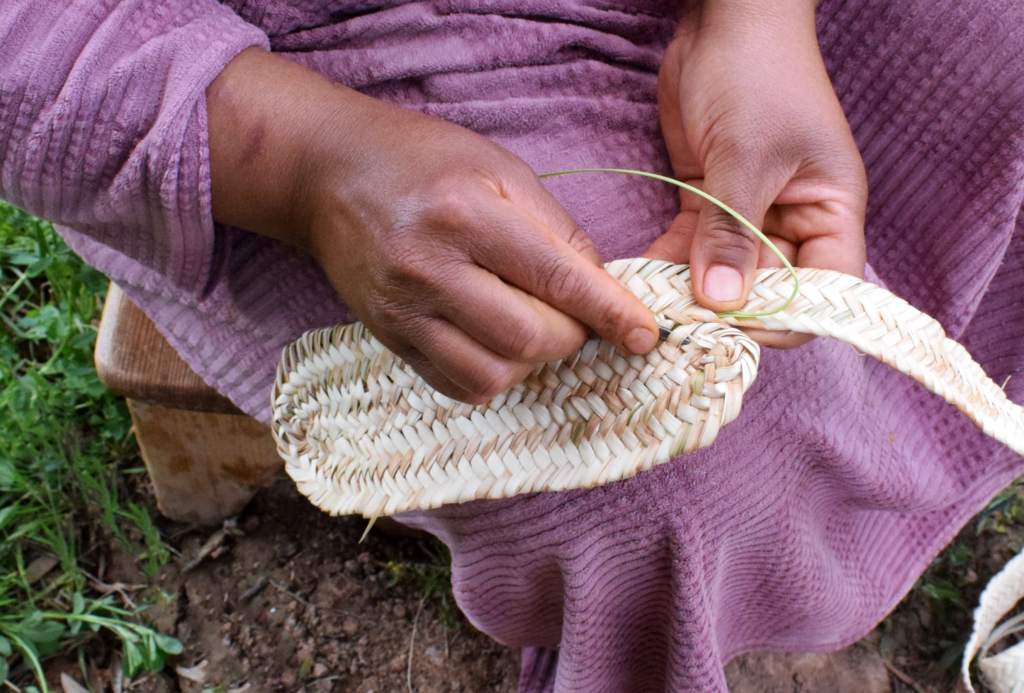
Khadija learned the art of trimming at a young age. Her mother, Habiba, was a well-known carpenter in their village, and every night she shared with Khadija the secrets of this profession.
The palm leaves, once harvested, are dried under the burning sun of Marrakech to make them flexible and durable.
Khadija watched his mother carefully manipulate these leaves delicately, folding and entangling them to form hard and aesthetic objects.
Each basket is the fruit of careful work, where each interlinkage is loaded with meaning and tradition. Khadija tricks, folds, and knots, letting his thoughts mix with the fibers of the palm trees.
Learning and mastering
As Khadija grew older, his hands became more skilled, and his love for crafts grew stronger. She started with simple objects, creating small baskets for kitchen spices. Gradually, she attacked more complex objects, such as beach baskets or shopping bags. Khadija was very proud to see the products of his work being used not only in his village but also sold worldwide.
Challenges
Despite his love for art, Khadija faces challenges. Demand for handicrafts is fluctuating, and competition from industrial products is strong. Nevertheless, she finds great satisfaction in her work, especially when she teaches this art to her own daughter, Khawla, hoping to preserve this tradition for future generations.
Conclusion
Through Morocco, stories like Khadija’s remind us of the importance of traditional crafts. Palm leaf baskets, more than simple containers, are a link with the past and a gateway to the future, testifying to human ingenuity and perseverance. In Khadija’s hands, the palm leaves are not only carved to create a product but also to preserve part of the Moroccan soul.
The art of leather
The art of leather
At the heart of our Moroccan craft workshop, leather occupies an honorable place in the manufacture of our baskets. This noble material, worked on with know-how and passion, is used for a wide variety of handicraft products, including our baskets. In this blog, we dive into the fascinating world of Moroccan leather and its innovative use in the art of basketry, our main activity.
Moroccan Leather
For centuries, Morocco has been known for the exceptional quality of its leather, a legacy of craftsmanship passed on from generation to generation. Tanners from Morocco are masters in the art of treating and dying leather, using traditional techniques dating back to antiquity. Moroccan leather is distinguished by its flexibility, durability, and rich color shades, making it a valued material worldwide.
The Use of Leather in basketry
While our traditional baskets were often carved out of natural materials such as oak, palm trees, and halfa, the use of leather in fermentation is a recent but promising development. Our craftsmen used the unique properties of leather to create stylish and functional baskets.
Manufacturing Techniques
Our craftsmen use various techniques to work the leather and turn it into baskets. Some baskets are made entirely from truncated leather, while others incorporate leather elements such as handles, edges, or ornaments. Leather can be truncated, sewn, dyed, embossed, and even stamped to create complex patterns and unique designs.
The manufacturing stages of leather handle follow a traditional process, where each step is carefully carried out by our experienced artisans.
Here is an overview of the main manufacturing steps:
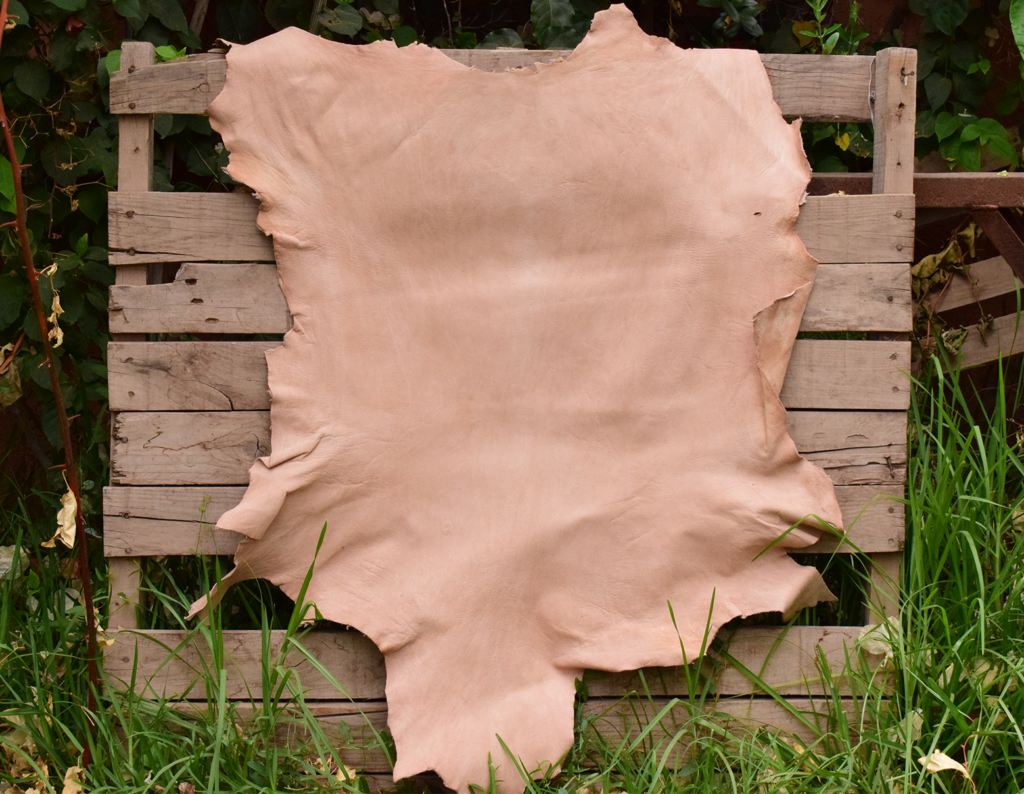
1. Leather Selection: It all starts with the choice of leather. High-quality skins are selected, usually from cow or goat skins, depending on the strength and aesthetics desired for the donkeys.
2. Cut: Selected leather skins are cut into strips of the appropriate size for the ankles. Our craftsmen take care to cut the strips accurately, taking into account the desired length, width, and thickness for each handle.
3. Smoothing: Leather strips are then smoothed and leveled to eliminate imperfections and obtain a uniform surface. This step is essential to ensuring that the ankles will have a smooth and attractive appearance once they are finished.
4. Folding and modeling: Leather strips are folded according to the desired shape for the ankles, whether flat, rounded, or truncated. Our craftsmen often use templates to ensure uniform and consistent dimensions.
5. Sewing: Depending on the style and design of the handle, some may require seams to strengthen the folds or to add decorative elements. Our craftsmen use specialized sewing techniques, often by hand, to secure the different parts of the sash together.
6. Finishing: Once the cords are assembled, they are subjected to finishing stages to improve their appearance and durability. This can include smoothing edges, polishing the surface, and applying protective treatments to prevent wear and damage.
7. Inspection and Quality: Before being ready for use, leather handle are inspected to ensure that they meet high quality standards. Any defects or imperfections are corrected, guaranteeing that each handle is a product of artisanal quality.
Once all these steps are completed, leather handle are ready to be integrated into various products such as handbags, beach bags, backpacks, and more, adding a touch of elegance and durability to every craft creation.
The Versatility of Leather in the Moroccan basketry
Our Moroccan leather baskets are appreciated for their versatility and durability. They can be used as stylish shopping bags, as storage baskets in the house, or even as chic decoration accessories. Variations in styles and sizes are endless, allowing everyone to find the perfect leather basket to suit their needs and style.
Future Perspectives
As the world evolves, Moroccan craft continues to reinvent itself to meet the demands of the modern market. Craftsmen explore new techniques and designs to remain relevant while preserving the essence of their cultural heritage. In this context, leather remains a valuable and inspiring material that will continue to play an important role in the future of Moroccan basketry.



